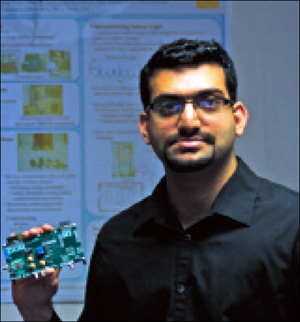One key way to reduce the cost of passive ultrahigh-frequency RFID transponders is to reduce the cost of the antenna. Companies have tried printing antennas, but the cost is often just as high as the cost of metal antennas, or the performance isn’t as good. Researchers at the University of Manchester may have achieved a breakthrough using something called graphene, a carbon material that is similar to graphite but with a different molecular structure.
Xianjun Huang, an electrical engineering student at the university, and some of his colleagues were doing research into low-cost means of enabling wearable electronic devices, wireless sensors and RFID tags. Metallic inks have been used to create antennas, but the silver used in inks can be expensive and some countries have banned them from landfills.
Huang and his colleagues looked at graphene inks—graphene is a carbon-based material that is conductive. The problem with graphene inks has been that binders used to create the ink reduce conductivity. Heating the inks to temperatures of 250 degrees Celsius (482 degrees Fahrenheit) or more for 30 minutes can remove the binder and improve conductivity, but the high heat damages common RFID tag substrates (paper and plastic) and increases production cost. Binder-free graphene inks, which can be made at lower temperatures, do not conduct electricity well enough to create an RFID tag with the read range most users require.
The team mixed graphene nanoflakes, dispersants and solvents, but no binders. The result was a porous graphene film. They then used a roller to compress the film, creating a smooth, nonporous antenna. The antenna’s conductivity was 50 times greater than the film’s before compression.
“The rolling compression makes the porous graphene ink coating highly dense to form graphene laminate,” Huang explains. “The contact resistance is significantly reduced, which improves conductivity a lot.”
The conductivity of the graphene ink is slightly lower than that of inks with silver or copper nanoparticles, Huang explains. “However,” he says, “the graphene ink is much cheaper and the process is much simpler and more cost-effective. It suits mass production well.”
Compressed graphene laminate antennas do not require high-temperature annealing and can be printed onto paper or plastic substrates. The researchers have patented the technique and are looking at ways to commercialize the technology.
How much cheaper would graphene antennas be over current metal or metallic ink antennas? “Much cheaper,” Huang says. “That’s all we can say at this stage. Our goal is to make them cheap enough for itemization identification.”


